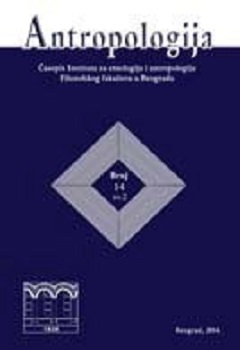Култ и иконографија Светог Григорија Ниског код Срба у средњем веку
Cult of St. Gregory of Nyssa in Medieval Serbia
Author(s): Anđela GavrilovićSubject(s): Visual Arts, Middle Ages, Eastern Orthodoxy
Published by: Институт за етнологију и антропологију
Keywords: Saint Gregory of Nyssa; cult; iconography; medieval Serbia; hagiographical sources; frescoes
Summary/Abstract: The following paper investigates the cult of St. Gregory of Nyssa in medieval Serbia (1168–1459) on the basis of hagiographical and iconographical sources. It reveals that the name of St. Gregory of Nyssa is regularly present in different hagiographical records: in preserved menologions for January, in full menologions, in prologues and other writings. The lives of St. Gregory from the analyzed prologues are rather extensive, spacing taking up half or a whole page, or even more. They especially emphasize the bishop of Nyssa as a great zealot of Orthodox Faith, its defender against heresy and participant of the Second Ecumenical Council held in Constantinople in 381. The last sentence of the lives usually describes the physical appearance of St. Gregory. Regarding St. Gregory’s portraits, they are present on frescoes in a great number of Serbian medieval churches. We distinguish between two main types in the portrayal of this bishop: the first one, dominant, representing him as a mature man, with apparent physical resemblance to his brother St. Basil the Great (Studenica monastery, 1208–1209; ill. 1; Sopoćani monastery, c. 1265; ill. 2, 3) and the second one, portraying him as an elder with white hair and beard falling over his chest (Mateič monastery, 1348–1353; ill. 4; Zemen monastery, c. 1360). The resemblance of two brothers, St. Basil and St. Gregory, can be noticed on the portraits in the Dečani monastery (ill. 5, 6). The present paper also discusses the liturgical texts written on the scrolls which St. Gregory usually holds in his hands.
Journal: Antropologija
- Issue Year: 18/2018
- Issue No: 3
- Page Range: 73-86
- Page Count: 14
- Language: Serbian

